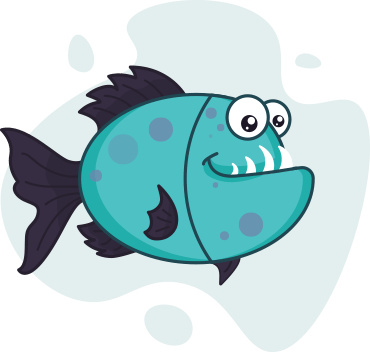What Can Artists Do That AI Can’t 2025? Creativity, Emotion, and Originality
Illustrate Now
In 2025, AI-generated art is more advanced than ever—able to create images, music, and writing that resemble human creativity with stunning accuracy. Yet for all its technical brilliance, AI still can’t replicate what makes human art meaningful: lived experience, emotional nuance, and an original voice.
As society integrates generative tools into daily life and creative industries, the value of human artistry has never been clearer—or more essential. This article explores what sets human creators apart, and why their work remains irreplaceable in the AI age.
Table of Contents
Toggle1. Emotional Depth Rooted in Real Experience
AI can mimic expressions of emotion—but it can’t feel anything.
Every illustration, poem, or melody from a human artist often carries the weight of personal history—loss, joy, trauma, or triumph. This lived emotional authenticity resonates deeply with audiences.
Example: A hand-painted image of grief by someone who’s lost a loved one doesn’t just show sadness—it communicates it. That emotional transfer is something AI still cannot generate authentically.
🖌️ Looking for meaningful art? Choose illustration style by real artists who bring their stories, emotions, and perspective into every piece.
2. Creativity That Defies, Not Follows, Patterns
AI thrives on pattern recognition. But revolutionary human art often breaks away from those patterns—intentionally and intuitively.
Throughout history, artists have sparked movements like Cubism, Dadaism, or Abstract Expressionism not by following rules, but by rebelling against them. These breakthroughs were acts of vision, not computation.
Example: Surrealist artists combined Freud’s psychoanalysis with political resistance. AI can imitate the visuals, but not the purpose behind them.
🎨 Pro tip: For creative projects that break boundaries, choose illustrators who think beyond templates. Explore our custom illustration offerings that reflect bold, original thinking.
3. Authorship, Identity, and Voice
In 2025, AI can generate “new” work—but it has no personal narrative or identity behind it.
Real artists spend years refining their style. Their art evolves with them, shaped by their surroundings, beliefs, and experiences. This sense of authorship gives human-made art emotional weight and meaning.
Real-life example: Viewing a Frida Kahlo painting is not just about aesthetics—it’s about her culture, her pain, and her politics. AI can mimic her brushstrokes, but not her soul.
✍️ Why it matters: If you’re seeking illustration for editorial, branding, or storytelling, human illustrators offer something AI can’t: a consistent, evolving, authentic voice.
4. Cultural Understanding and Ethical Sensitivity
Art is not just creative—it is culturally rooted. It reflects the language, values, struggles, and traditions of real people.
AI can replicate cultural symbols, but it often does so without understanding, permission, or ethical judgment. This leads to misrepresentation, appropriation, or lack of nuance.
Example: A Native artist uses traditional patterns with care and meaning. An AI might misuse those same elements without any cultural awareness.
🌍 Need culturally sensitive artwork? Work with artists who live the culture, not just analyze it. Our illustration services for diverse projects prioritize authenticity and respect.
5. The Process: Presence, Vulnerability, and Growth
Unlike AI, human artists don’t just output finished pieces—they invite us into the process: the drafts, the doubts, the breakthroughs.
Audiences are increasingly drawn to the behind-the-scenes journey: sketches, studio tours, livestreams, or step-by-step illustration reels. These touchpoints build emotional connection and community.
Human presence can’t be faked. Live performances, public murals, and collaborative art require physicality and interaction—something AI can’t simulate.
📸 Follow the process: Explore how our artists work in real time through studio insights and in-progress illustrations.
6. Ethical Agency and Social Impact
Artists are more than creators—they are critics, storytellers, and change-makers. Unlike AI, they can take moral stances, challenge systems, and move people toward reflection or action.
Example: Artists like Ai Weiwei or Banksy use their art to protest injustice. An AI tool can’t choose to be brave—it can only follow prompts.
🖼️ Ethical art matters: Choose artists who use their platform with intention. Our commissioned illustration services can help visualize your mission with integrity.
Why This Matters in 2025: The Human Touch Is the Real Value
As AI-generated content floods the digital landscape, it becomes easier to blur the line between machine-made and human-made. But in doing so, we risk losing the very qualities that make art powerful: emotion, originality, ethics, and meaning.
The most valuable creations will not be the most polished—but the most honest.
Let AI generate. Let humans create.
Final Thoughts: Artists Aren’t Competing with AI—They’re Showing Us What It Means to Be Human
In a future defined by automation and speed, real artists remind us of something essential: that vulnerability, unpredictability, and lived experience still matter.
Their ability to feel, to imagine beyond datasets, and to express something uniquely personal ensures that human-made art will always have a place—and a purpose.
🎨 Need art that connects emotionally, ethically, and creatively? Explore our professional illustration services and commission work that tells a human story.
FAQs: Human Artists vs. AI in 2025
1. Can AI create original art in 2025?
AI can generate impressive visuals, but it lacks true originality and intention. It recombines data—it doesn’t feel, grow, or rebel like human artists.
2. Why is emotion important in art?
Emotion builds connection. Art rooted in real feeling—grief, joy, love—resonates deeply. AI can simulate tone, but not actual experience.
3. How is human-made art different from AI-generated art?
Human art reflects identity, context, and intent. AI lacks backstory, purpose, or ethical awareness.
4. Will AI replace artists?
AI may automate certain styles or tasks, but human artists offer something AI can’t: personal vision, ethical agency, and emotional depth. Artists who lean into these strengths will thrive.
5. How can artists stand out in the age of AI?
By emphasizing authorship, process, cultural nuance, and emotional authenticity. Show your story. Invite people into your journey.







